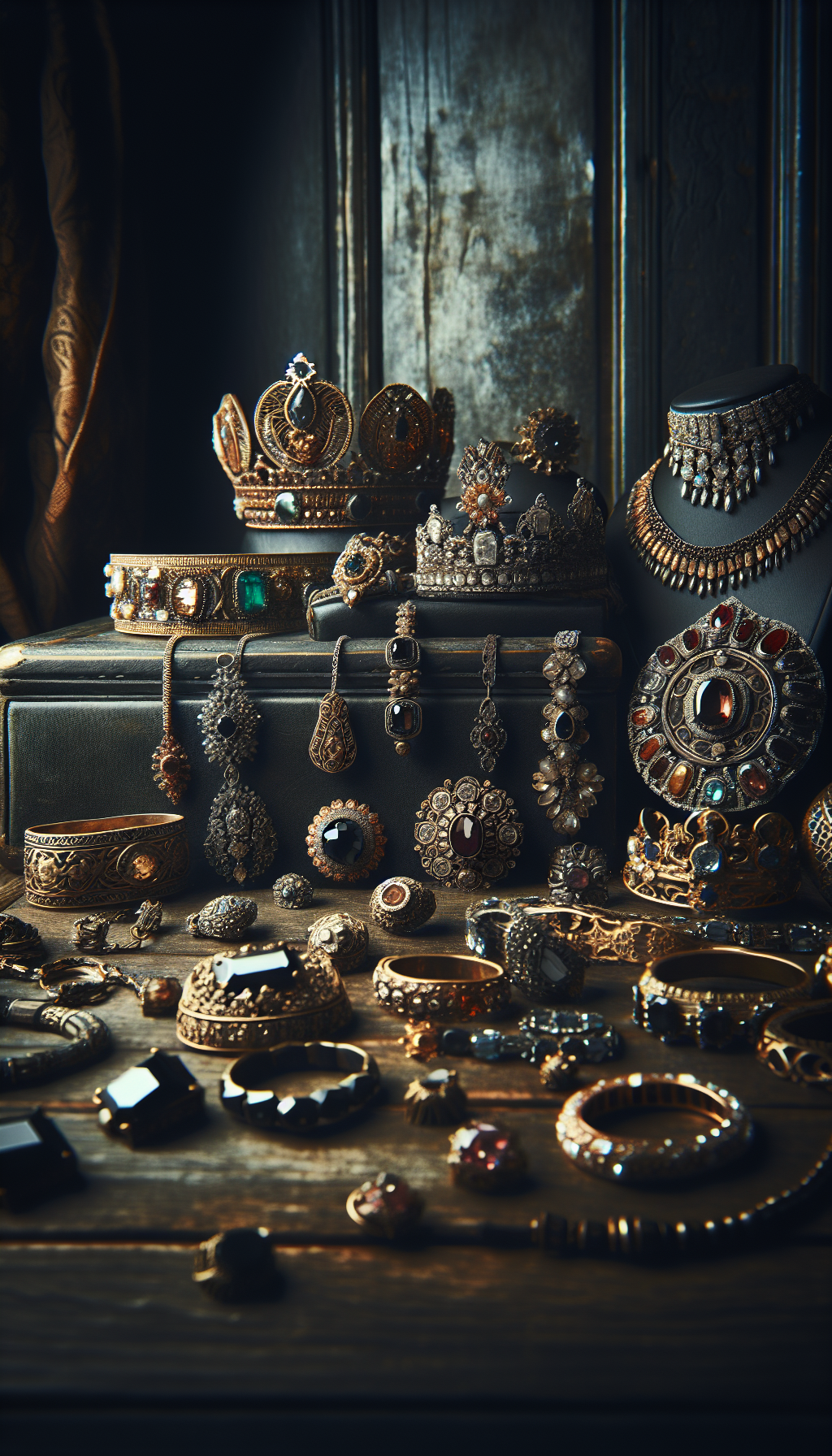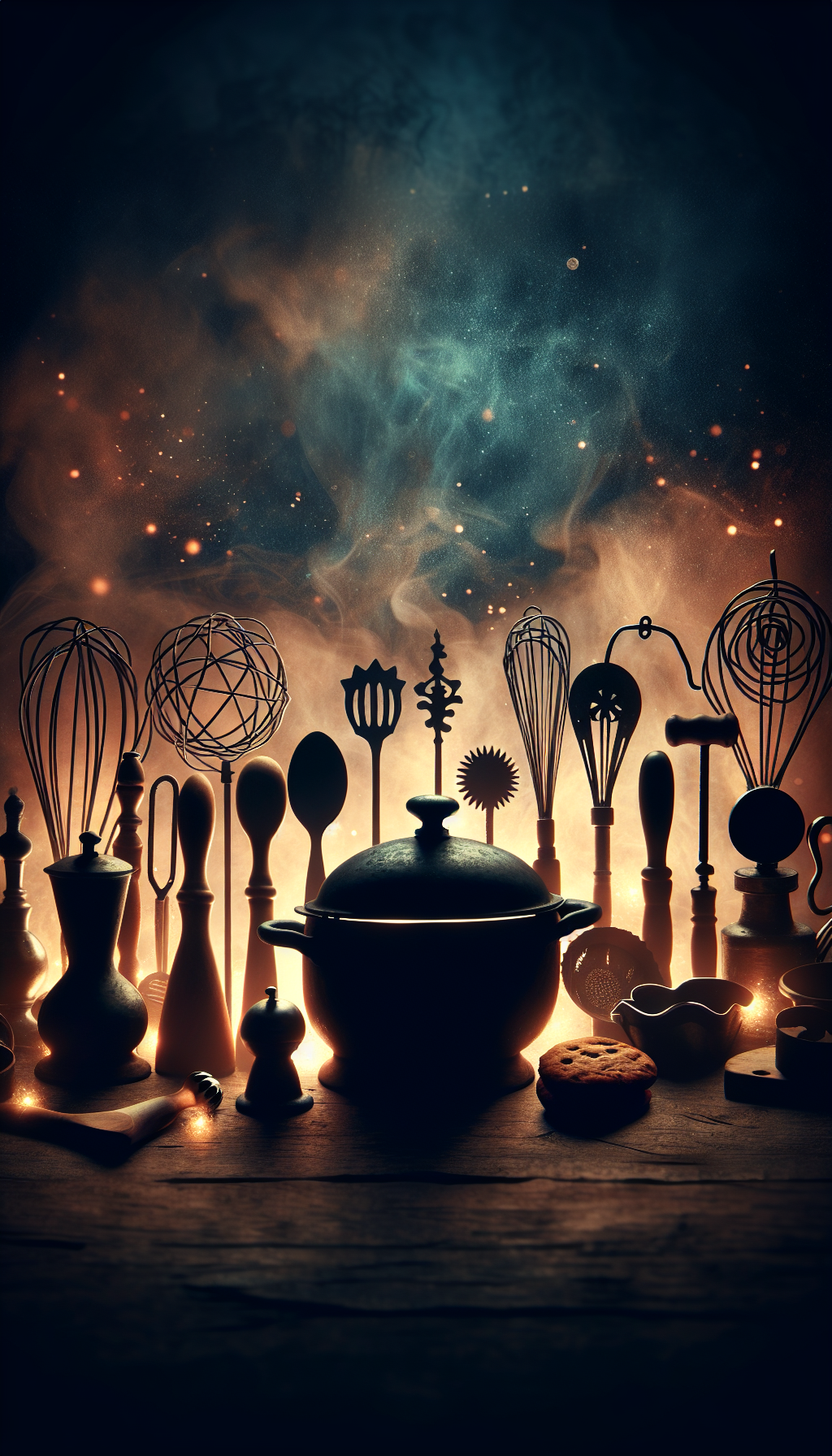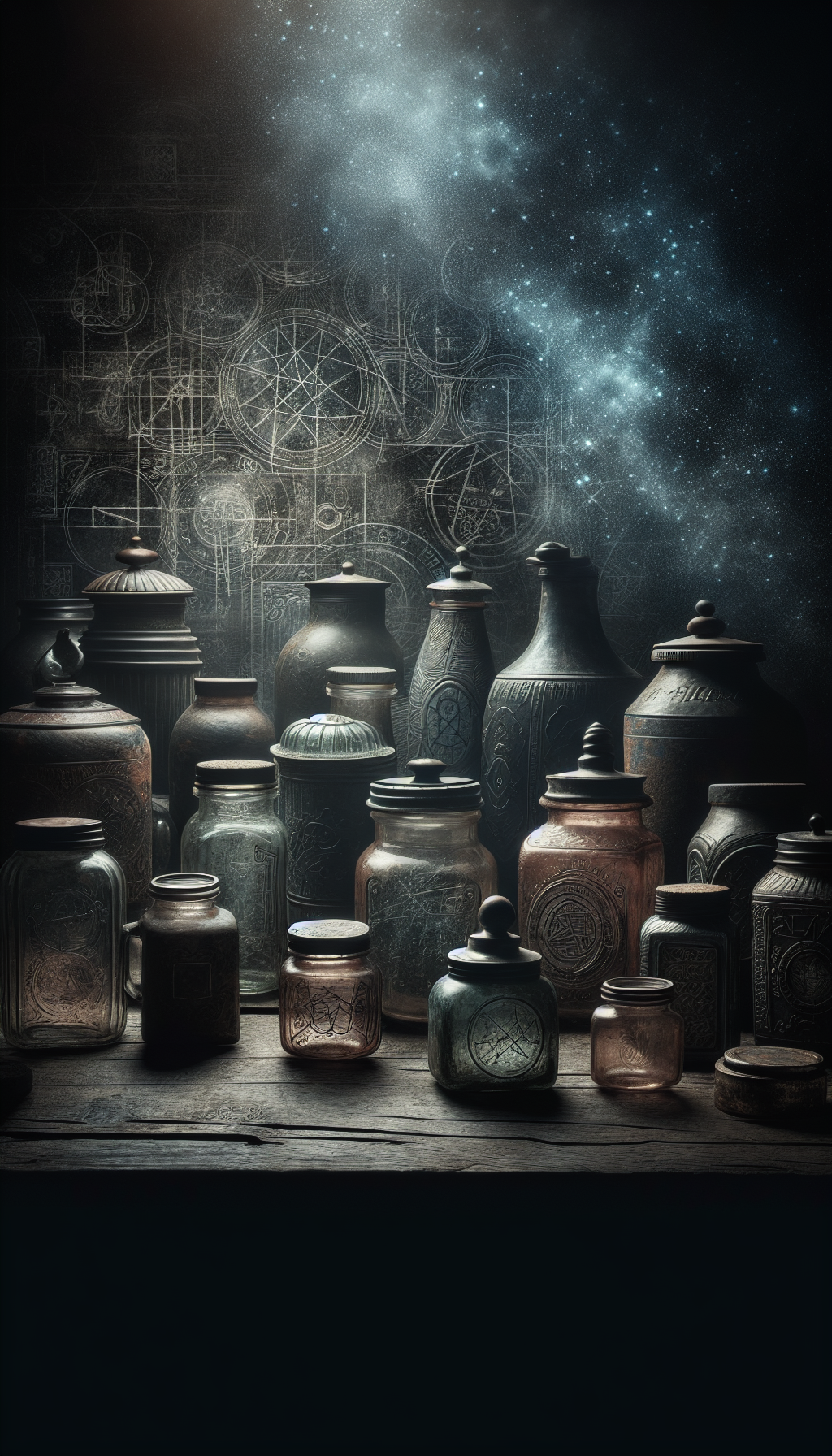Antique Silverware Value Guide: Expert Tips for Identification & Appraisal
Antique silverware represents both functional artistry and tangible history. Whether you’ve inherited a set of sterling silver flatware or discovered a unique serving piece at an estate sale, understanding its true value requires knowledge of several key factors. This comprehensive guide will help you navigate the intricate world of antique silverware valuation, from identifying authentic pieces to determining their worth in today’s market.
Introduction to Antique Silverware
What Makes Silverware Antique?
The value of antique silverware varies dramatically - from as little as $5 for common pieces to over $1 million for extremely rare items with historical significance. This wide range illustrates why proper identification and condition assessment are crucial when determining value.
Antique Silverware Value Statistics
Identifying Authentic Antique Silver
Understanding Silver Marks and Hallmarks
Silver marks typically include:
Sterling Standard Mark: In the United States, sterling silver is marked “STERLING” or “925” (indicating 92.5% pure silver). British sterling silver carries hallmarks including the lion passant.
Maker’s Mark: A symbol, initials, or name identifying the manufacturer or silversmith.
Date Mark: Some regions used a letter system to indicate the year of production.
City or Assay Office Mark: Identifies where the piece was tested for silver content.
Evolution of American Silver Marks
- Pre-1860s
Early American Silver
Early American silversmiths typically stamped their name or initials. Standardized marking systems were not yet established. - 1860s
Sterling Standard Adoption
The "STERLING" mark becomes standardized in America, indicating 92.5% silver content. - 1868
Gorham Date Symbol System
Gorham introduces a letter dating system, with each letter representing a specific year of manufacture. - 1906
National Marking Standard
The U.S. government establishes a national standard for sterling silver marking.
Distinguishing Between Sterling, Silver Plate, and Coin Silver
Sterling Silver: Contains 92.5% pure silver and 7.5% other metals (usually copper). Sterling silver is the most valuable type and is marked “STERLING,” “925,” or with appropriate hallmarks.
Silver Plate: Base metal (often copper, nickel, or brass) covered with a thin layer of silver through electroplating. Typically marked “EP,” “EPNS” (Electro-Plated Nickel Silver), “Silver on Copper,” or similar. Silver plate has significantly lower value than sterling, though antique pieces in excellent condition can still be collectible.
Coin Silver: An older American standard containing 90% silver, slightly less than sterling. Commonly used before the 1870s and often marked “COIN” or “PURE COIN.”
Key Value Factors for Antique Silverware
Age, Rarity, and Historical Significance
Rarity plays a crucial role in determining value. Limited production patterns, experimental designs, and pieces from renowned workshops can be exceptionally valuable. Silverware with provenance linking it to historical events or notable figures can sell for premium prices at specialized auctions.
Value Impact of Historical Significance
How provenance affects antique silverware values
</tbody>
</table>
Pattern, Design, and Manufacturer
Notable American Manufacturers:
- Gorham
- Tiffany & Co.
- Reed & Barton
- Towle
- Wallace
- International Silver Company
Notable European Manufacturers:
- Christofle (France)
- Georg Jensen (Denmark)
- Mappin & Webb (England)
- Paul Storr (England)
- Buccellati (Italy)
Certain patterns remain in high demand generations after their introduction. According to collector forums, select patterns can sell for $80-$90 per fork for particularly desirable designs.
Condition Assessment
Silverware Condition Assessment Checklist
Evaluate these aspects when determining condition
<li class="condition-checklist__item">
<input type="checkbox" disabled aria-hidden="true">
<span>No dents, bends, or repairs</span>
</li>
<li class="condition-checklist__item">
<input type="checkbox" disabled aria-hidden="true">
<span>Original finish with minimal wear</span>
</li>
<li class="condition-checklist__item">
<input type="checkbox" disabled aria-hidden="true">
<span>Sharp details on ornate patterns</span>
</li>
<li class="condition-checklist__item">
<input type="checkbox" disabled aria-hidden="true">
<span>No monograms or removal attempts</span>
</li>
<li class="condition-checklist__item">
<input type="checkbox" disabled aria-hidden="true">
<span>Even patina appropriate to age</span>
</li>
<li class="condition-checklist__item">
<input type="checkbox" disabled aria-hidden="true">
<span>No pitting or corrosion</span>
</li>
<li class="condition-checklist__item">
<input type="checkbox" disabled aria-hidden="true">
<span>Complete set with matching pieces</span>
</li>
<li class="condition-checklist__item">
<input type="checkbox" disabled aria-hidden="true">
<span>Original storage box or chest</span>
</li>
Common condition issues that reduce value include:
Monograms: While historically significant monograms can sometimes add value, most personalized engravings reduce market appeal.
Wear to Pattern Details: Excessive use can wear down intricate details on pattern surfaces.
Repairs: Professional repairs may be acceptable but typically diminish value compared to pristine examples.
Mixed Sets: Complete matching sets command premium prices; mismatched pieces sell for less.
Completeness and Set Size
A complete service for 12 in a desirable pattern can sell for thousands of dollars, while individual pieces from the same pattern might only fetch $20-50 each. Original wooden chests or presentation boxes enhance value considerably.
Current Market Values
Sterling Silver Flatware Market Prices
Approximate Sterling Silver Flatware Values
Current market price ranges (2023)
| Category | Price | Notes |
|---|---|---|
| Standard antique sterling pattern | $20-$100 per piece | Common patterns in good condition |
| Rare pattern by notable maker | $100-$500+ per piece | Limited production designs |
| Items with documented historical provenance | $500-$10,000+ per piece | Connected to significant historical figures |
| Museum-quality pieces with exceptional history | $10,000-$1,000,000+ | Extraordinary historical significance |
</tbody>
</table>
For sterling silverware, the absolute minimum value is the silver scrap price, currently averaging $0.60-$0.85 per gram depending on market conditions. A typical sterling silver dinner fork weighs approximately 60 grams, giving it a minimum melt value of $36-$51. However, selling antique silverware for scrap should generally be considered a last resort for damaged pieces only.
Silver-Plated Flatware Values
Silver-Plated Flatware Value Ranges
Current market price ranges (2023)
| Category | Price | Notes |
|---|---|---|
| Common patterns, individual pieces | $5-$30 per piece | Based primarily on silver weight |
| Desirable patterns, individual pieces | $30-$90 per piece | Depends on pattern popularity |
| Basic service for 8 | $800-$2,500 | 5-piece place settings in good condition |
| Complete service for 12 (popular pattern) | $3,000-$10,000+ | With serving pieces and original chest |
| Rare pattern service for 12 | $10,000-$50,000+ | With serving pieces and original chest |
</tbody>
</table>
How to Research and Identify Your Silverware
Pattern Identification Resources
Reference Books: “Encyclopedia of American Silver Manufacturers” by Dorothy Rainwater and “Kovels’ American Silver Marks” are excellent resources.
Online Pattern Matching Services: Websites like Replacements Ltd. offer pattern identification services.
Silver Dealer Consultations: Established silver dealers can often identify patterns at a glance.
Online Forums: Communities like the Silver Collectors Forum can help identify unusual patterns.
Once you’ve identified your pattern, research recent sales of similar items through:
- Online marketplaces (eBay, Etsy, Ruby Lane)
- Auction results (Sotheby’s, Christie’s, Heritage Auctions)
- Replacement service websites (Replacements Ltd., Silver Queen)
Professional Appraisal Options
Types of Professional Appraisals:
Retail Replacement Value: For insurance purposes, establishing the cost to replace items with similar pieces.
Fair Market Value: Used for estate taxes or donations, representing what a willing buyer would pay a willing seller.
Liquidation Value: Establishes the value in a forced or quick sale scenario.
When selecting an appraiser, look for:
- Certification from recognized organizations like the International Society of Appraisers (ISA) or American Society of Appraisers (ASA)
- Specialization in silver or antique metalwork
- Experience with similar items
- Clear fee structure (typically $100-$300 per hour)
Selling Antique Silverware
Best Venues for Selling
For High-Value, Rare Pieces:
- Specialized antique auctions (in-person or online)
- High-end antique dealers
- Estate sale specialists
- Dedicated silver retailers
For Mid-Range Value Items:
- Mid-tier auction houses
- Reputable online marketplaces (1stDibs, Ruby Lane)
- Antique shows and fairs
- Consignment shops specializing in antiques
For Common or Lower Value Pieces:
- eBay, Etsy, or Facebook Marketplace
- Local antique shops
- Silver replacement services
- Estate sales
For Damaged Sterling Silver:
- Silver buyers
- Refiners
- Scrap metal dealers (absolute last resort)
Preparing Silverware for Sale
Gentle Cleaning: Use appropriate silver polish to remove tarnish without damaging patina. Never use harsh abrasives.
Documentation: Gather any provenance information, original boxes, and prior appraisals.
Pattern Research: Document the manufacturer, pattern name, and approximate age.
Photography: Take clear, well-lit photos from multiple angles highlighting maker’s marks.
Set Organization: Count pieces and organize by type. Complete sets sell for more than individual pieces.
Realistic Pricing: Research comparable sales to set realistic expectations.
Caring for Valuable Antique Silver
Proper Storage and Cleaning
Storage Recommendations:
- Store in anti-tarnish cloth or specially designed silver chests
- Keep pieces separated to prevent scratching
- Avoid rubber bands, plastic wrap, or newspaper which can cause tarnish
- Maintain stable humidity levels (high humidity accelerates tarnish)
- Use felt or cloth dividers between stacked pieces
Cleaning Guidelines:
- Clean only when necessary; over-cleaning removes patina
- Use appropriate silver polish designed for antiques
- Avoid dishwashers and harsh chemical cleaners
- Clean with long strokes in the direction of the pattern
- Rinse thoroughly and dry completely with soft cloth
- For ornate patterns, use a soft-bristled brush for crevices
FAQs About Antique Silverware Value
Common Questions About Antique Silverware Value
How do you appraise old silverware?
Antique silver appraisers evaluate multiple factors to determine value, including:- Maker's marks and hallmarks to identify manufacturer and silver content - Pattern identification to establish desirability and rarity - Condition assessment noting wear, damage, repairs, and original finish - Weight measurement for sterling pieces (establishing minimum melt value) - Completeness of sets and presence of original storage boxes - Historical significance and provenance documentation Professional appraisers compare these factors to similar items with established market values to provide an accurate valuation. For valuable pieces, formal written appraisals from certified professionals are recommended, especially for insurance or estate purposes.
How old does silverware have to be to be considered an antique?
For a piece to be considered true antique silverware, it must be over 100 years old. Silverware from the nineteenth century and early twentieth century qualifies as antique.Items that are 50-100 years old are generally classified as "vintage" rather than antique. While vintage silverware can still be valuable, particularly from notable designers or in desirable patterns, genuine antiques typically command higher prices due to their greater age and historical significance. The distinction matters for both collecting purposes and when dealing with certain regulations, as some countries have specific import/export restrictions for items classified as antiques.
What is the most valuable antique silverware pattern?
Several antique silverware patterns are particularly sought after by collectors and consistently achieve premium prices:- Tiffany & Co. "Chrysanthemum" pattern (introduced 1880) - Gorham "Versailles" pattern (introduced 1888) - Reed & Barton "Francis I" pattern (introduced 1907) - Georg Jensen "Acorn" pattern (introduced 1915) - Wallace "Grand Baroque" pattern (introduced 1941) Among these, Tiffany's Chrysanthemum is often considered the most valuable American pattern, with single serving pieces sometimes selling for thousands of dollars. The ultimate value depends on the specific piece, condition, and rarity within the pattern. Limited production serving pieces command significantly higher prices than standard flatware items.
Is antique silverware worth more than its weight in silver?
Yes, most antique sterling silverware is worth significantly more than its silver melt value, often 2-10 times more depending on the pattern, maker, condition, and rarity. This "premium over spot" represents the artistic, historical, and collector value beyond the raw material.Only damaged pieces, extremely common patterns in poor condition, or heavily monogrammed items might be valued close to their silver weight. As of 2023, sterling silver has a melt value of approximately $0.70-$0.85 per gram, making a typical sterling dinner fork worth about $40-50 in silver content alone. For valuable patterns by prestigious makers like Tiffany, Gorham, or Jensen, the collector value can exceed the metal value by 10-20 times or more. Silver-plated items derive almost all their value from collector interest rather than metal content, as the silver layer is typically too thin to recover economically.
Does a Service for 12 sterling silver flatware have significant value?
Yes, a complete sterling silver flatware Service for 12 typically has substantial value, ranging from $2,000 to $20,000+ depending on the pattern, manufacturer, age, and condition. Complete sets command a significant premium over individual pieces or partial sets.A standard Service for 12 includes: - 12 dinner forks - 12 salad forks - 12 teaspoons - 12 soup spoons - 12 dinner knives - Various serving pieces Particularly valuable are sets that: - Include all serving pieces (10-20 additional specialized utensils) - Come in the original wooden chest or canteen - Have no missing pieces - Show minimal wear from use - Lack monograms (unless historically significant) Premium patterns from makers like Tiffany, Gorham, or Wallace in excellent condition can sell for $10,000-$30,000 for a complete service with serving pieces.
How much is an antique silver spoon worth in scrap?
The scrap value of an antique sterling silver spoon depends entirely on its weight and the current market price of silver. As of 2023, sterling silver (92.5% pure) has a scrap value of approximately $0.70-$0.85 per gram, though this fluctuates with precious metal markets.A typical antique sterling silver teaspoon weighs 20-30 grams, giving it a scrap value of approximately $14-$25. A tablespoon or serving spoon (40-60 grams) would be worth $28-$50 in silver content. However, selling antique silver flatware for scrap should generally be considered a last resort, as most pieces have collector value exceeding their metal content by 2-10 times. Only severely damaged, unmarked, or extremely common pieces should be considered for scrap. If considering selling for scrap, obtain quotes from multiple reputable precious metal buyers, as prices offered can vary significantly.
Where to Learn More
External Resources for Antique Silverware Identification and Valuation
Antique Silver Organization
Comprehensive guide to determining the value of antique silver with detailed information on authentication methods and value factors.
Bellevue Rare Coins: Sterling Silver Flatware Value Guide
Expert insights on sterling silverware values with details on how to determine if your flatware is valuable.
Decorative Collective: Beginner's Guide to Antique Silverware
An excellent introduction to antique silverware for collectors with insights on value determination and market trends.
LoveToKnow: Finding Antique Silver Values
Comprehensive resource on how to research and determine the value of your antique silver items.
Bellamy's World: Evaluating Antique Sterling Silver
Detailed guide on identifying authentic antique sterling and determining fair market values.
Antique Cupboard
Extensive online catalog of antique silverware patterns with pricing information and identification tools.
M.S. Rau Antique Silver Collection
Gallery of museum-quality antique silver with detailed descriptions and historical context from a premier dealer.
Reddit Antiques Community
Discussion forum with insights from collectors and dealers on current market conditions for antique silverware.
Conclusion
Antique silverware represents a fascinating intersection of functional art, craftsmanship, and history. Whether you’re looking to value a family heirloom, considering a purchase, or exploring silverware as an investment, understanding the factors that determine value is essential.
The most valuable antique silverware combines several key elements: authentic sterling silver composition, prestigious maker, desirable pattern, excellent condition, complete matching sets, and sometimes historical provenance. While the intrinsic silver value provides a baseline, the collector and aesthetic value typically far exceeds the metal content for quality pieces.
For accurate valuation of significant pieces, professional appraisal is recommended, especially for insurance, estate, or significant sales purposes. With proper care, antique silverware can remain both beautiful and valuable for generations, representing both a connection to the past and a potentially appreciating asset.
Get a Professional Appraisal
Unsure about your item’s value? Our certified experts provide fast, written appraisals you can trust.
- Expert report with photos and comps
- Fast turnaround
- Fixed, upfront pricing
No obligation. Secure upload.
| Category | Price | Notes |
|---|---|---|
| Common silver-plate patterns, individual pieces | $1-$5 per piece | Basic patterns with light plating |
| Premium silver-plate patterns, individual pieces | $5-$15 per piece | Heavy plating, excellent condition |
| Complete silver-plate service for 8 | $100-$300 | With original chest |
| Antique high-quality silver-plate service for 12 | $300-$1,200 | Premium maker, excellent condition |



